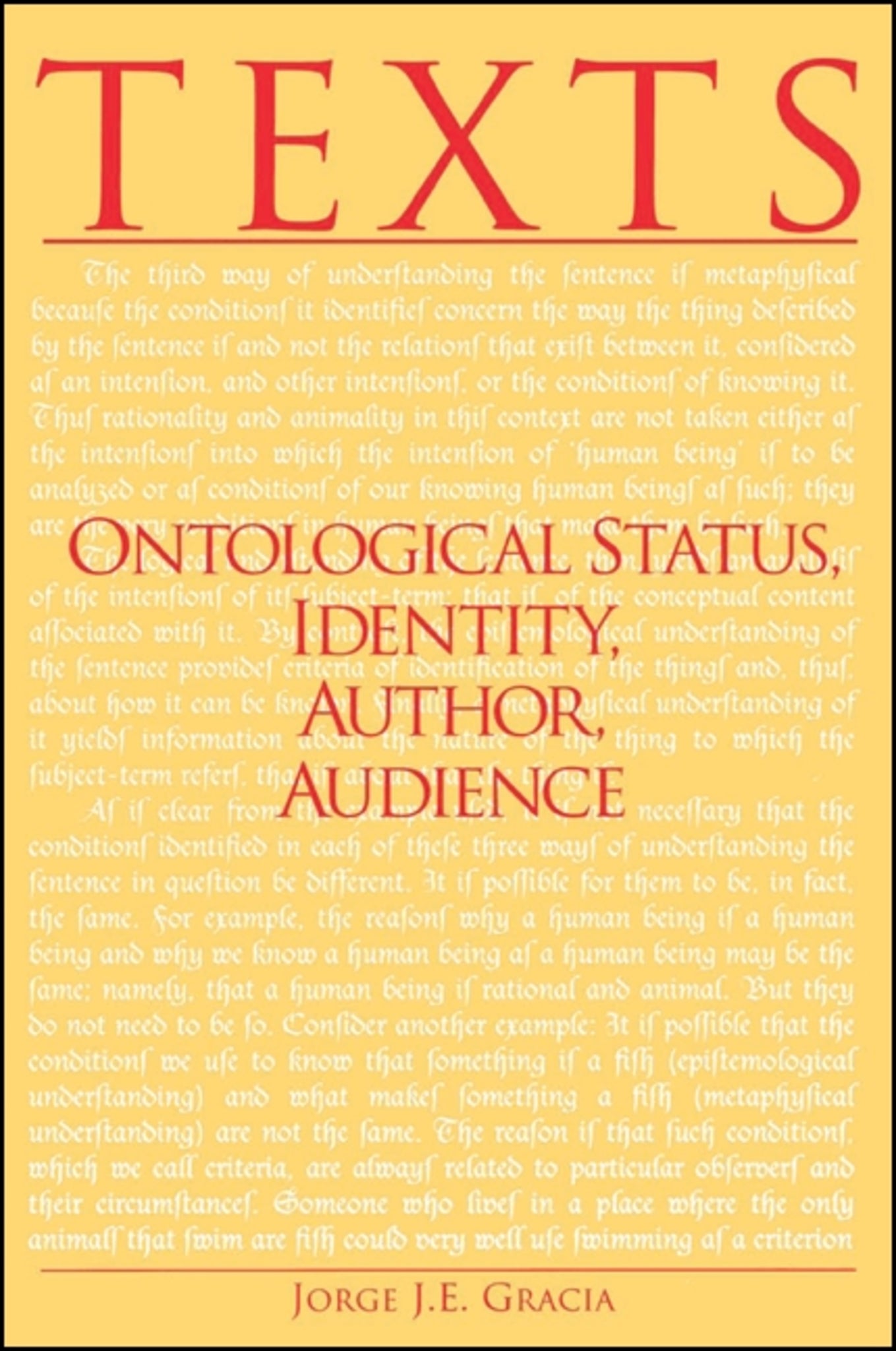We're sorry. An error has occurred
Please cancel or retry.
Texts

Some error occured while loading the Quick View. Please close the Quick View and try reloading the page.
Couldn't load pickup availability
- Format:
-
03 July 1996

Provides an ontological characterization of texts, explores the issues raised by the identity of various texts, and presents a view of the function of authors and audiences, and of their relations to texts.
This book completes the theory of textuality whose logical and epistemological dimensions were presented in Gracia's book, A Theory of Textuality: The Logic and Epistemology (SUNY Press). It provides an ontological characterization of texts consistent with the conception of texts defended in the earlier book; it explores the issues raised by the identity of various texts; and it presents a view of the identity and function of authors and audiences and of their relations to texts. The discussion is systematic, comprehensive, and detailed. Gracia raises all of the important issues related to texts within the areas he explores and takes into account the pertinent literature. The style is argumentative and clear, and the position Gracia defends is based on common sense. He stays clear of the extreme views some contemporary authors have taken with respect to texts and textuality.
This is the only book of its kind. It is the first to develop a comprehensive theory and to adopt an integrative approach where the issues and their solutions are seen as closely connected.


"Gracia's argument is impressively clear and to the point. He develops a complex taxonomy of the distinctions he must marshal in order to fully explain what a text is, describing and defending each distinction with care and in detail. His conclusions follow reasonably from his arguments and he does an excellent job anticipating criticisms and answering them. Gracia is fully informed by the relevant philosophical scholarship on texts and on the wide range of metaphysical issues of which he must take account in order to establish his position." — George Allan, Dickinson College
Preface
Introduction
I. The Logic of Texts
II. Outline
1. Ontological Status
I. Are Texts Individual or Universal?
A. Individuality and Universality of ECTs
B. Individuality and Universality of Meanings
C. Individuality and Universality of Texts
II. Individuation of Texts
III. Are Texts Physical or NonPhysical?
A. Physical Texts
B. Mental Texts
IV. Relation of Texts to Meanings and ECTs
V. Are Texts Substances or Features?
VI. Are Texts Aggregates or Nonaggregates?
VII. Existence and Location of Texts
VIII. Historicity of Texts
IX. Conclusion
2. Identity
I. Sameness
A. Achronic Sameness of Texts
B. Synchronic Sameness of Texts
C. Diachronic Sameness of Texts
II. Difference
III. Identification and Reidentification of Texts
IV. Conclusion
3. Author
I. Identity of the Author
A. Historical Author
B. Pseudo-Historical Author
C. Composite Author
D. Interpretative Author
II. Function of the Author
A. Function of the Historical Author
B. Function of the Composite Author
C. Function of the Pseudo-Historical Author
D. Function of the Interpretative Author
III. Need for an Author
A. Need for the Historical author
B.Need for the Pseudo-Historical Author
C. Need for the Composite Author
D. Need for the Interpretative Author
IV. Repressive Character of the Author
V. Subjectivity of the Author
VI. Conclusion
4. Audience
I. Identity of the Audience
A. Types of Audience
B. Composition of the Audience
II. Function of the Audience
III. Need for an Audience
IV. Character of the Audience
A. Subversive Character
B. Repressive Character
V. Subjectivity of the Audience
VI. Conclusion
Conclusion
Notes
Select Bibliography
Index of Authors
Index of Subjects



